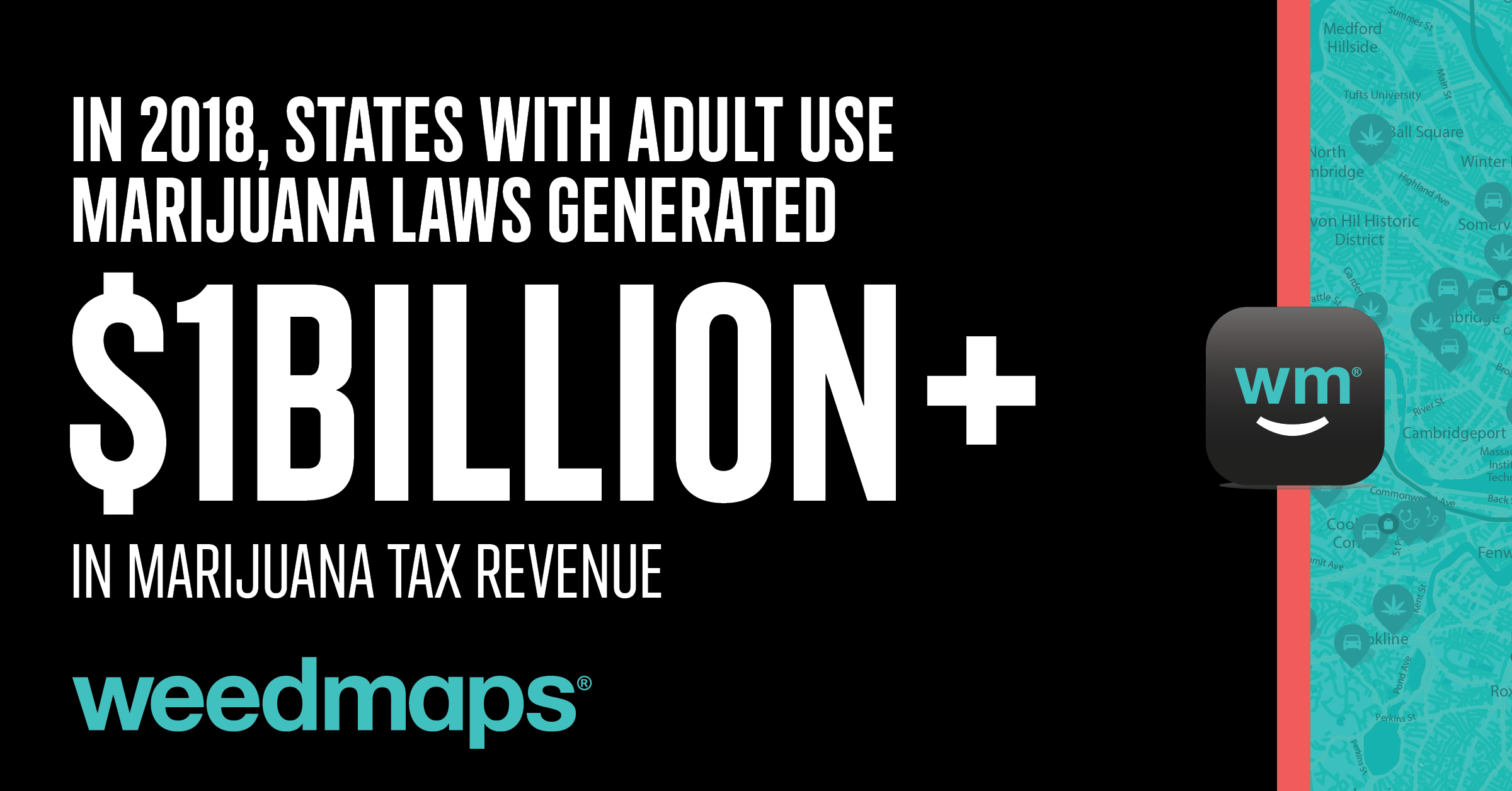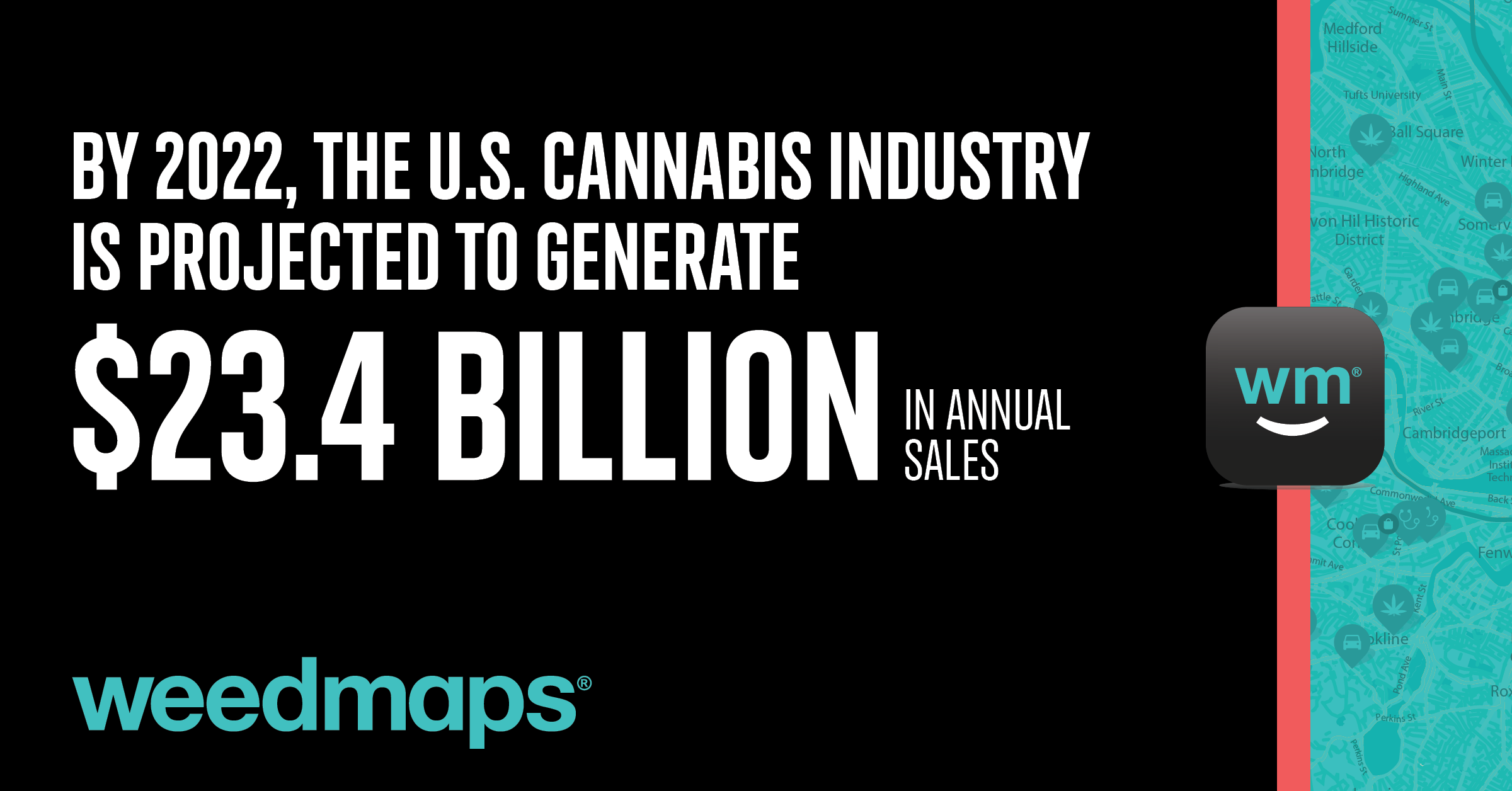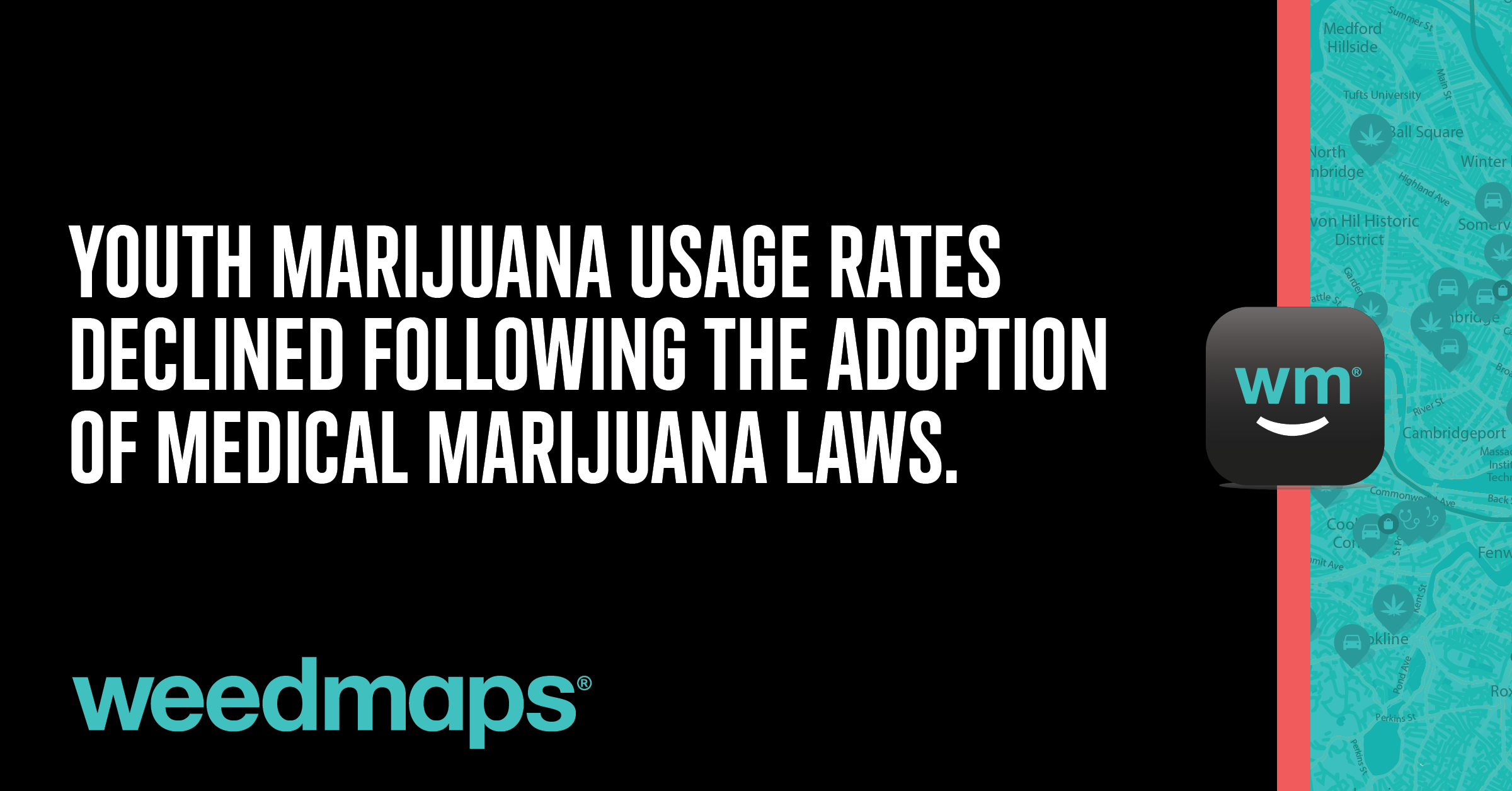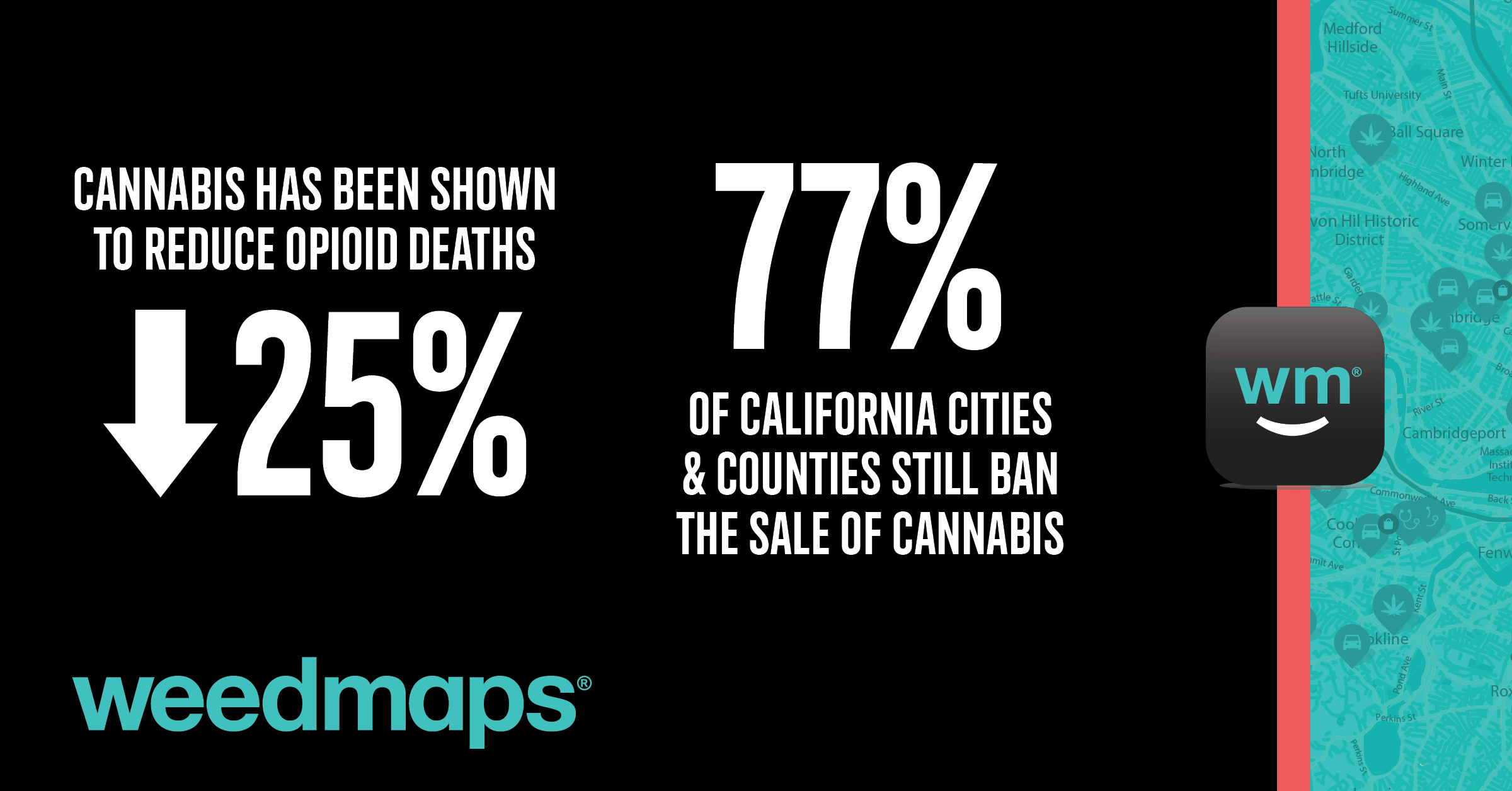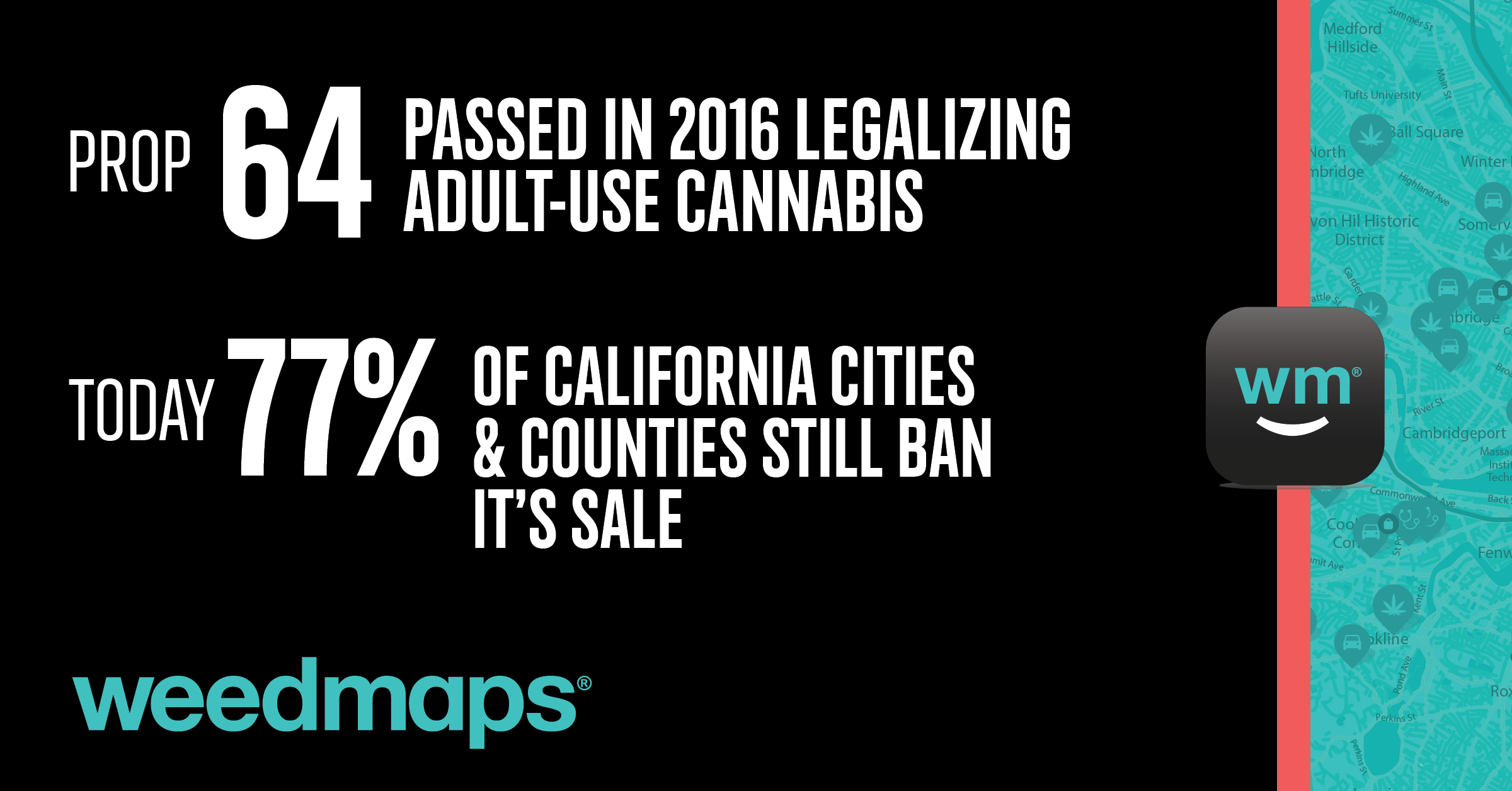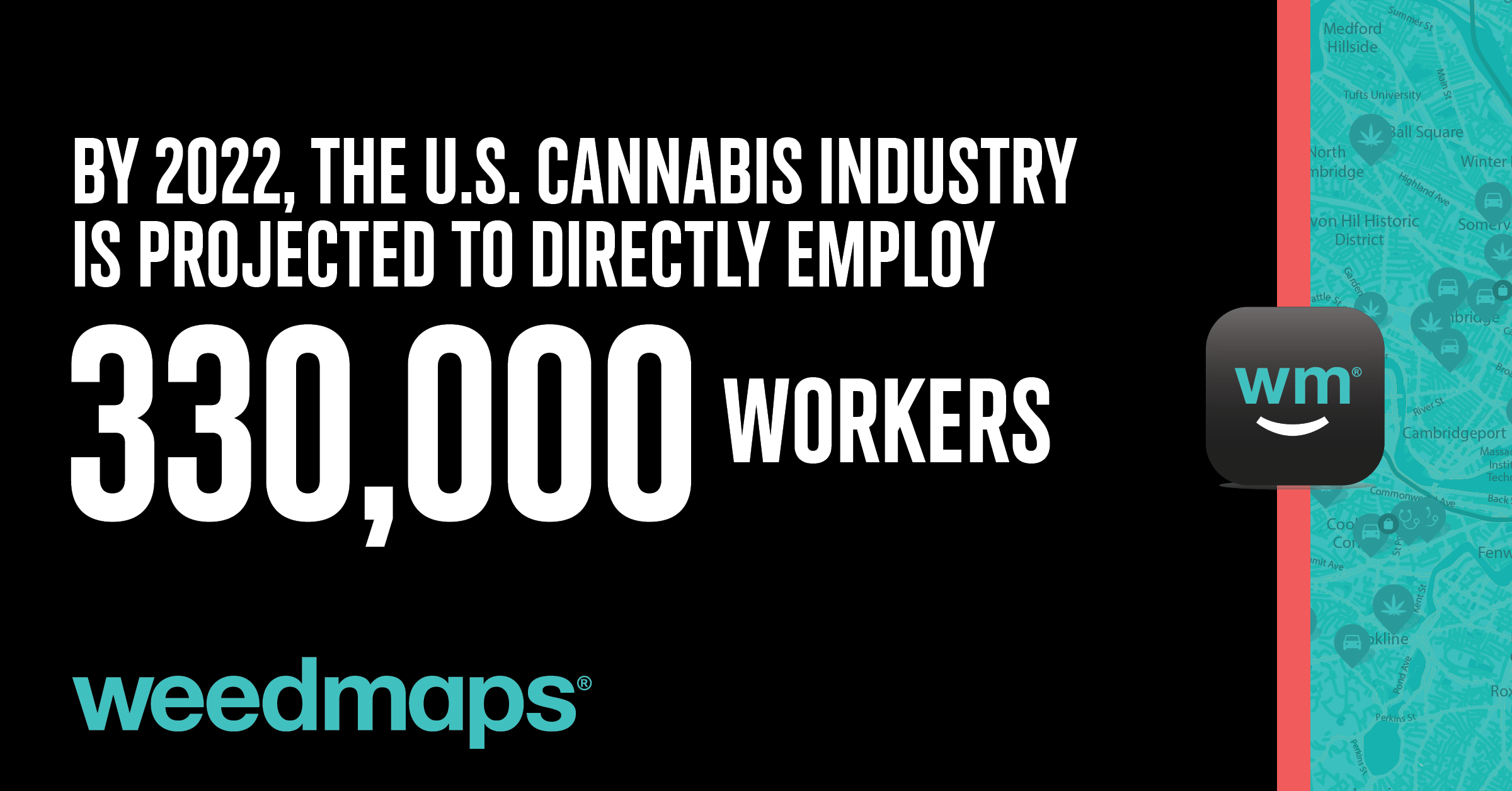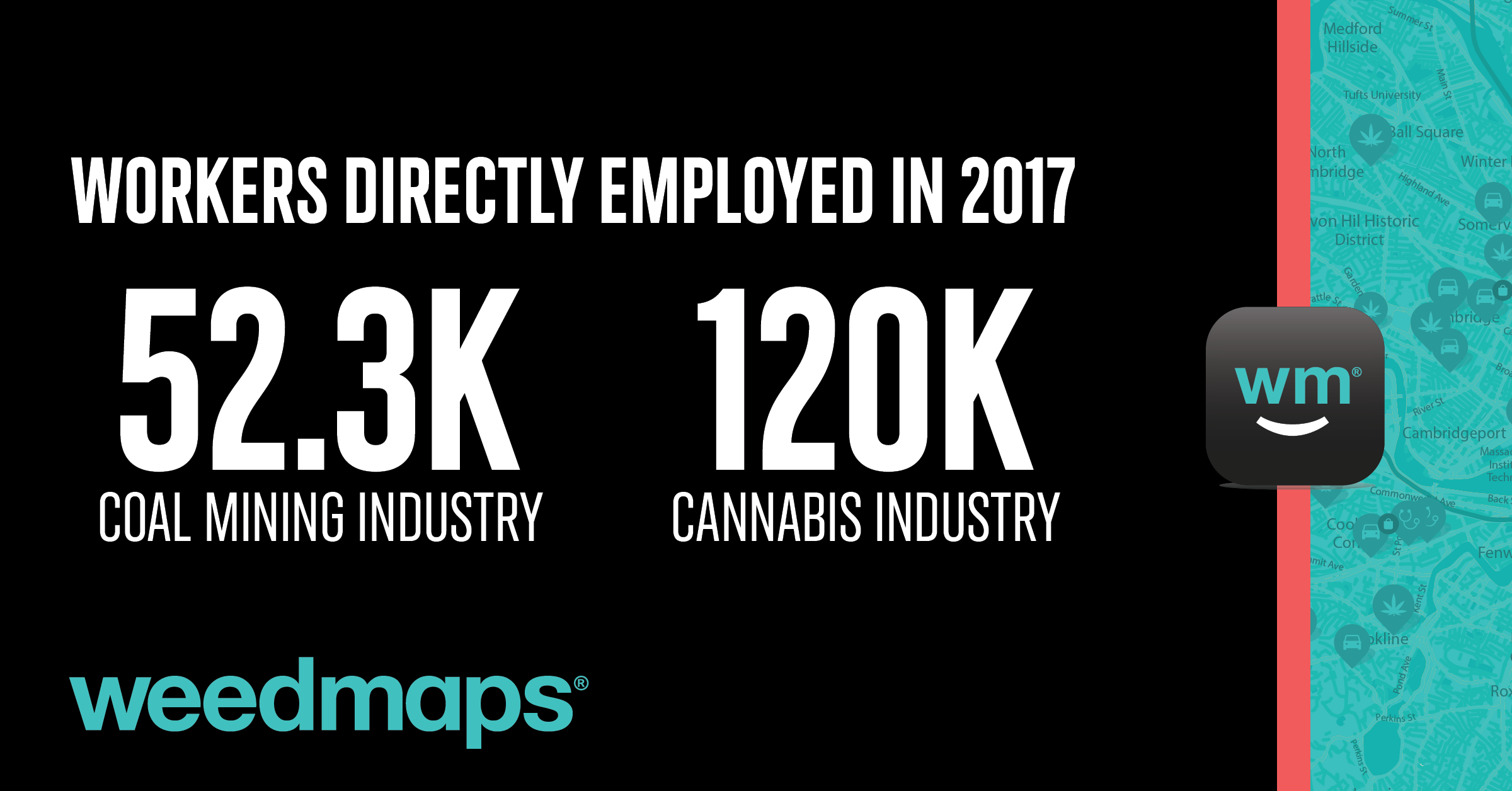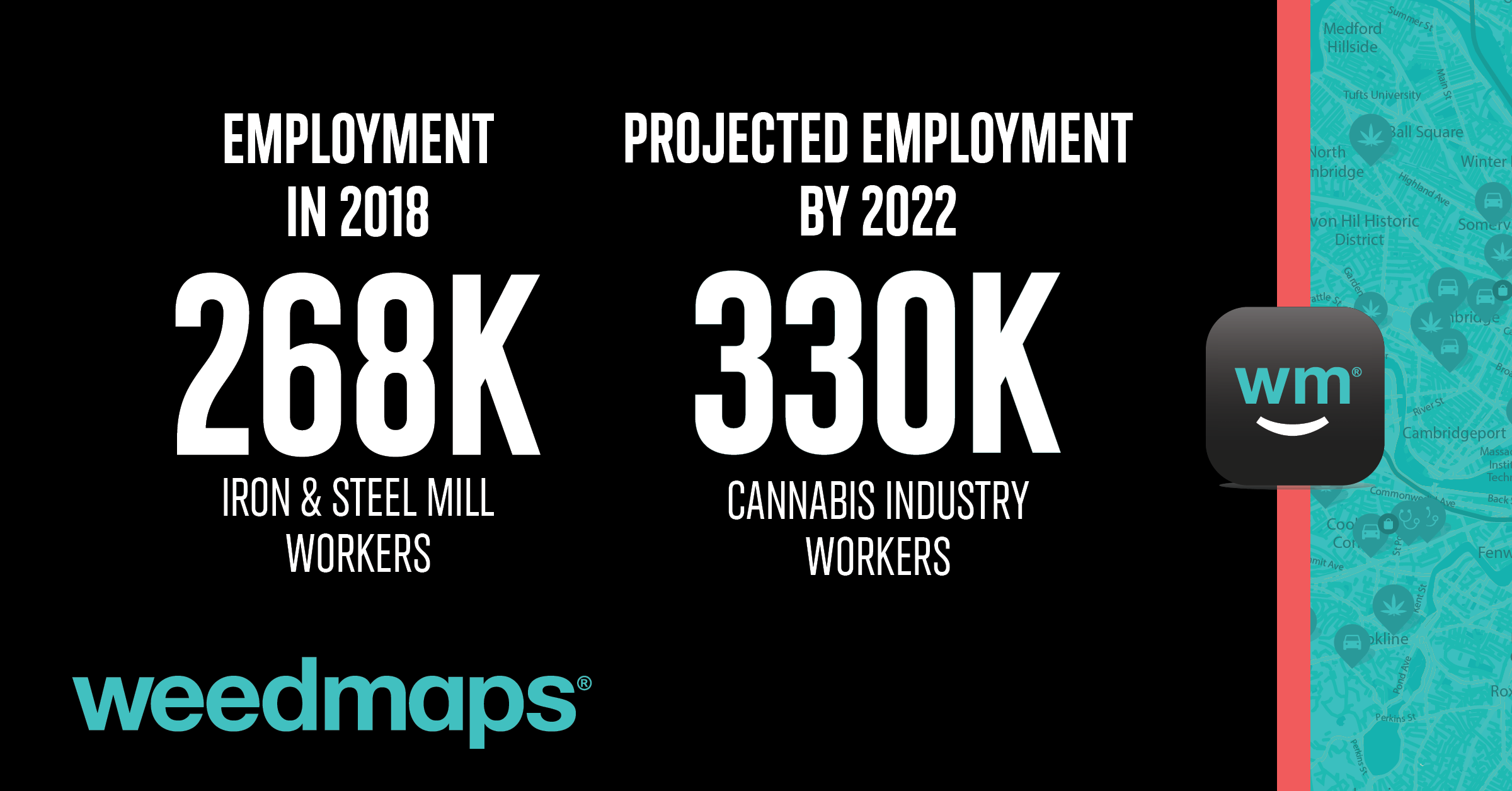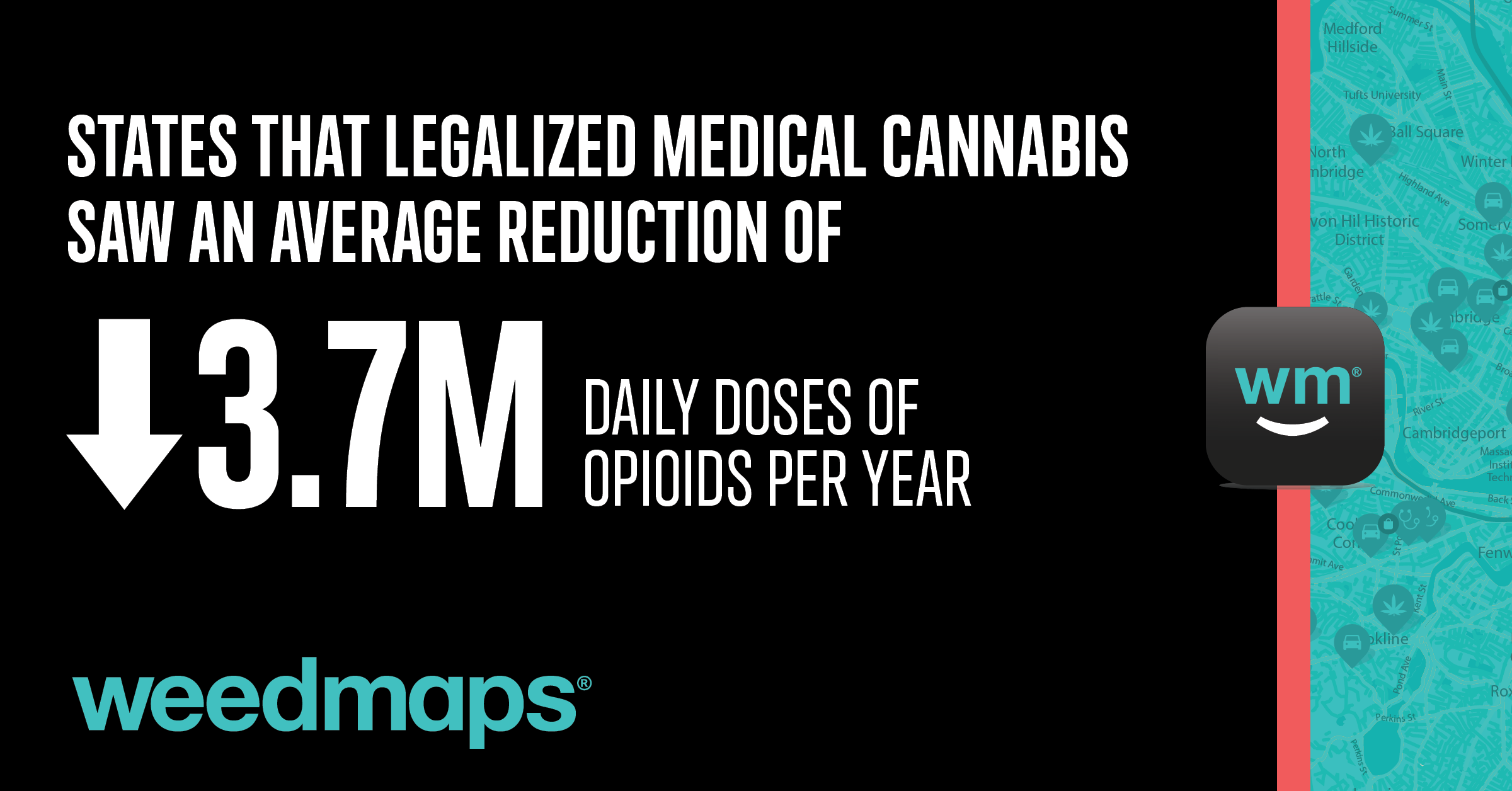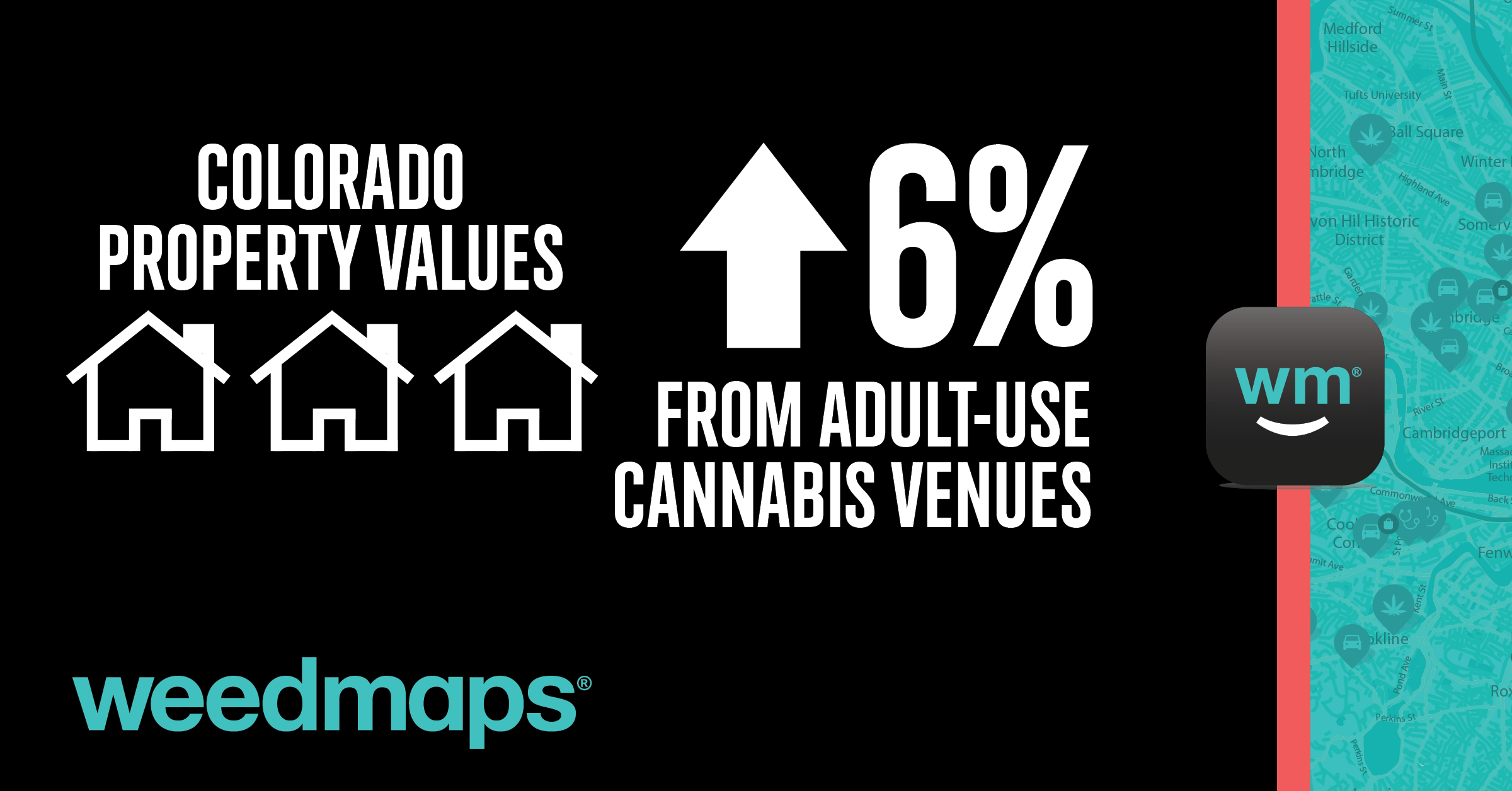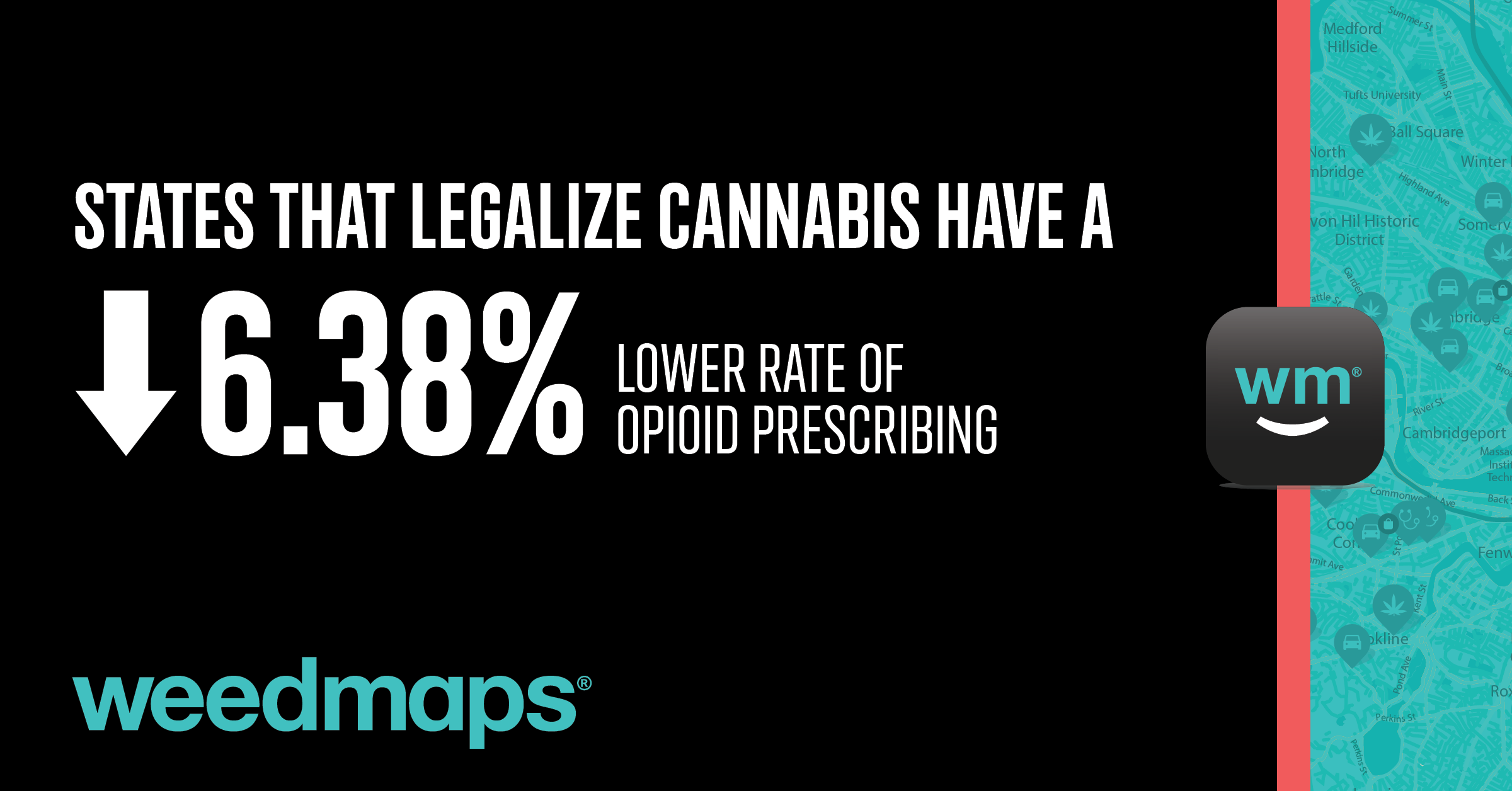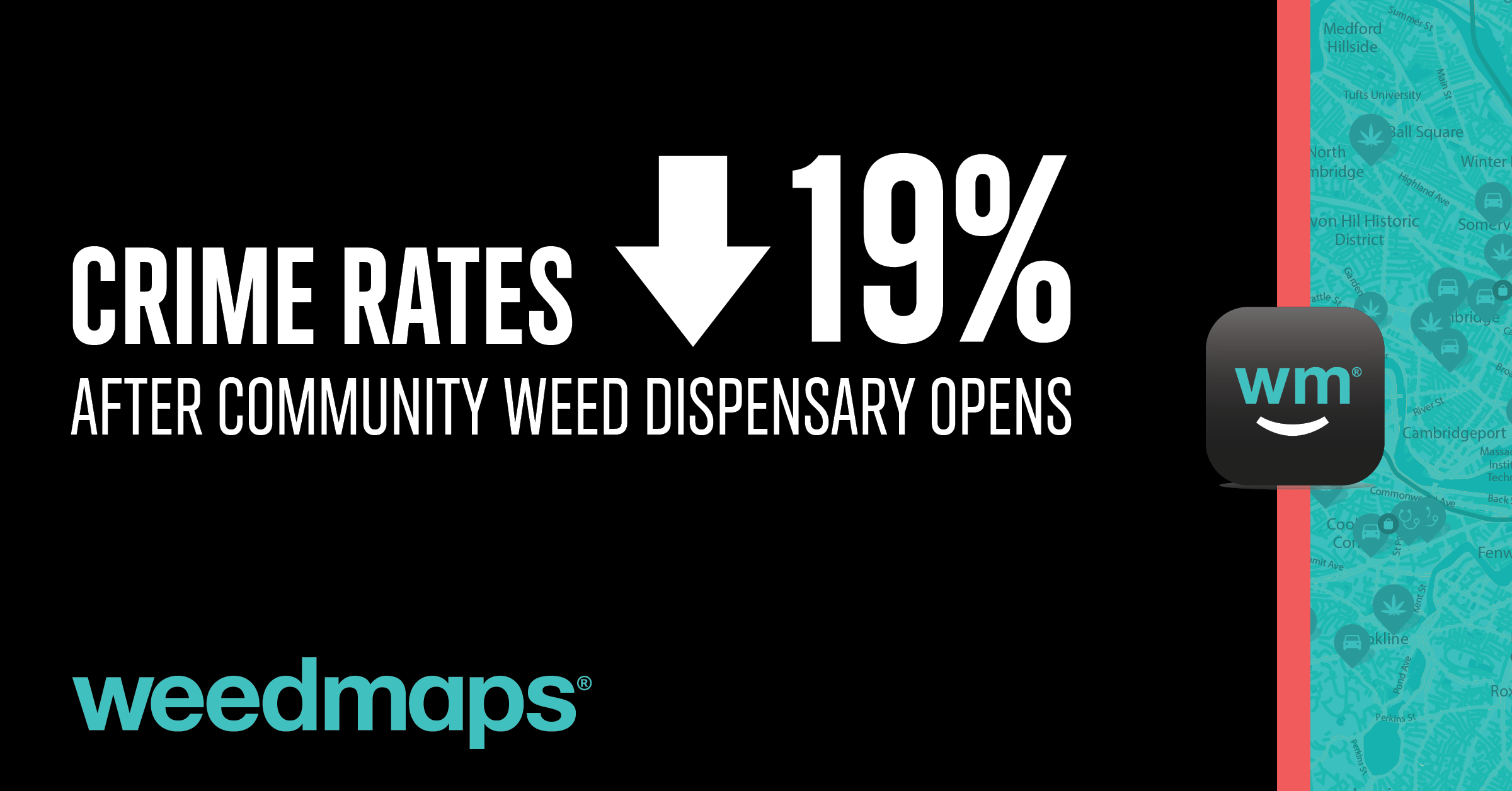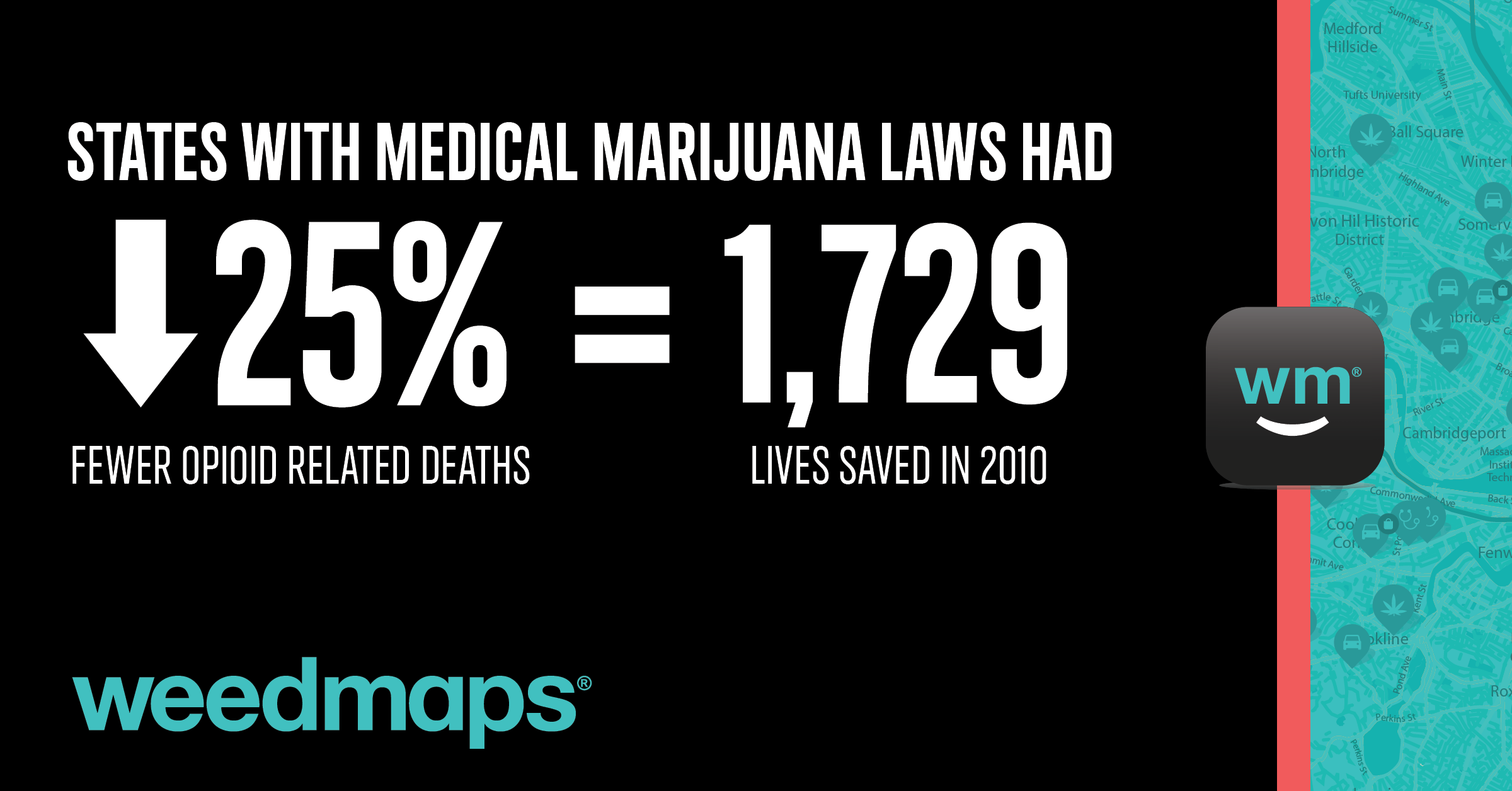The regulated cannabis industry has proven to be a key driver of tax revenue generation in states that have legalized adult-use cannabis. By setting modest tax rates on regulated cannabis sales at the state and local levels, policymakers have managed to unlock a substantial source of new tax revenue that can be dedicated to public education, infrastructure repair, and other government services. In 2018, seven states with regulated cannabis markets (Alaska, California, Colorado, Massachusetts, Nevada, Oregon, and Washington) generated more than $1 billion in cannabis tax revenue. Colorado alone generated $266 million* last year.1
The legalization of medical and adult-use marijuana is giving rise to a multi-billion dollar industry that is driving economic growth across the U.S. According to Arcview Market Research and BDS Analytics, the regulated cannabis industry in the U.S. is projected to generate $23.4 billion in annual sales by 2022. That means more job creation, tax revenue generation, and broad-based economic growth.2
By shifting the production, sale, and consumption of marijuana from the illicit market to a regulated system, legalization has the potential to make marijuana less accessible to youth. A growing body of research indicates that the adoption of medical and adult-use marijuana laws decreases youth marijuana usage rates. According to a February 2019 study published in The American Journal of Drug and Alcohol Abuse, researchers found that the passage of a medical marijuana law “was associated with small significant reductions…of 1.1 percentage points in current marijuana use” among adolescents.3
Medical marijuana laws have provided patients with an alternative to opioids for conditions as varied as chronic pain and PTSD. Given the severity of America’s opioid epidemic, researchers have increasingly studied the impact of medical marijuana laws on opioid prescription rates, hospitalizations, and deaths. Overall, researchers have identified strong associations between the passage of medical marijuana laws and declines in opioid prescribing as well as opioid-related hospitalizations and deaths. According to a study published in the American Medical Association’s JAMA Internal Medicine, “States with medical cannabis laws had a 24.8% lower mean annual opioid overdose mortality rate…compared with states without medical cannabis laws.”4
Patients and other consumers do not have the access promised by Prop. 64. There are vast areas of the state that are essentially “cannabis deserts” where patients and purchasers have to drive long distances to secure medicine and products. This is particularly alarming given that legal dispensaries are intended to replace the medical marijuana collectives that previously served patients. Those who rely on cannabis to treat their serious ailments, and those of their sick children, are being robbed of convenience and peace of mind, and pushed back into an illegal underground market.5
The passage of medical and adult-use cannabis laws gives rise to an entirely new industry that creates jobs in occupations as varied as management, cultivation, manufacturing, and retail. Each year, regulated cannabis businesses add tens of thousands of new jobs to the U.S. economy, and as legalization expands, the industry will have a growing impact on the labor market. According to Arcview Market Research and BDS Analytics, the U.S. cannabis industry is projected to directly employ 330,000 workers by 2022.6
The passage of medical and adult-use cannabis laws gives rise to an entirely new industry that creates tens of thousands of jobs in occupations as varied as management, cultivation, manufacturing, and retail. According to Arcview Market Research and BDS Analytics, the U.S. cannabis industry directly employed 120,000 workers in 2017 — more than double the 52,300 workers employed by the coal mining industry that same year.7
The passage of medical and adult-use cannabis laws gives rise to an entirely new industry that creates jobs in occupations as varied as management, cultivation, manufacturing, and retail. Each year, regulated cannabis businesses add tens of thousands of new jobs to the U.S. economy, and as legalization expands, the industry will have a growing impact on the labor market. According to Arcview Market Research and BDS Analytics, the U.S. cannabis industry is projected to directly employ 330,000 workers by 2022. That’s more than the 268,000 iron and steel mill workers employed in the U.S., according to the U.S. Bureau of Labor Statistics.8
Medical marijuana laws have provided patients with an alternative to opioids for conditions as varied as chronic pain and PTSD. Given the severity of America’s opioid epidemic, researchers have increasingly studied the impact of medical marijuana laws on opioid prescription rates, hospitalizations, and deaths. Overall, researchers have identified strong associations between the passage of medical marijuana laws and declines in opioid prescribing as well as opioid-related hospitalizations and deaths. According to a study published in the American Medical Association’s JAMA Internal Medicine, “prescriptions filled for all opioids decreased by 2.11 million daily doses per year…when a state instituted any medical cannabis law” and “prescriptions for all opioids decreased by 3.742 million daily doses per year when medical cannabis dispensaries opened.”9
A primary motivation for legalizing cannabis is the positive economic impact that this industry has on job creation, business development, community reinvestment, and tax revenue generation. While media coverage often highlights the eye-popping multi-million dollar cannabis tax revenue figures coming out of states like Washington and Oregon, a growing body of research is uncovering another positive impact of legalization: rising property values. According to a recent study published in Economic Inquiry, a Colorado city or town’s decision to permit regulated marijuana businesses increased “housing values by approximately 6%, or $15,600 per property.” Rising property values benefit a broad range of stakeholders–from homeowners who experience a net increase in their wealth to local governments and school districts that rely upon property tax revenue to fund public services.10
Medical marijuana laws have provided patients with an alternative to opioids for conditions as varied as chronic pain and PTSD. Given the severity of America’s opioid epidemic, researchers have increasingly studied the impact of medical marijuana laws on opioid prescription rates, hospitalizations, and deaths. Overall, researchers have identified strong associations between the passage of medical marijuana laws and declines in opioid prescribing as well as opioid-related hospitalizations and deaths. According to a study published in the American Medical Association’s JAMA Internal Medicine, “State implementation of medical marijuana laws was associated with a 5.88% lower rate of opioid prescribing,” and, “the implementation of adult-use marijuana laws…was associated with a 6.38% lower rate of opioid prescribing.”11
Legalizing marijuana has the potential to reduce crime by shifting the production, sale, and consumption of marijuana from the illegal market to a regulated system. In recent years, several studies have demonstrated the strong association between the passage of marijuana laws and reductions in crime. In 2017, researchers from the Federal Reserve Bank of Philadelphia analyzed the impact of marijuana dispensary openings on neighborhood crime rates in Denver, CO. Ultimately, the researchers found that crime rates declined 19% in neighborhoods after a marijuana dispensary opened.12
Medical marijuana laws have provided patients with an alternative to opioids for conditions as varied as chronic pain and PTSD. Given the severity of America’s opioid epidemic, researchers have increasingly studied the impact of medical marijuana laws on opioid prescription rates, hospitalizations, and deaths. Overall, researchers have identified strong associations between the passage of medical marijuana laws and declines in opioid prescribing as well as opioid-related hospitalizations and deaths. According to a study published in the American Medical Association’s JAMA Internal Medicine, “States with medical cannabis laws had a 24.8% lower mean annual opioid overdose mortality rate…compared with states without medical cannabis laws,” which resulted in 1,729 fewer deaths in 2010.13
